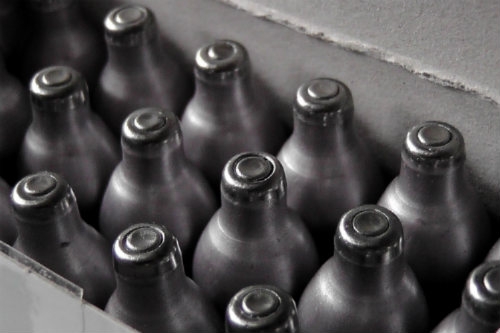
Rolling on the floor, laughing out loud. Laughing gas is known as the innocent party drug, but also as life-threatening. What should we believe? And to what do you - as a (future) laughing gas user - have to pay attention? We provide the answers!

What is laughing gas or nitrous oxide?
Let's start at the very beginning; what is laughing gas exactly? Laughing gas - or as chemists say: nitrous oxide (N2O) - is a sweet and colorless gas. Since the 18th century, this gas used to put patients under short-term anesthesia. Nowadays, nitrous oxide is less suitable during surgery, but it is used more as a drug - mild party drugs.
Young people in particular use laughing gas. Via a whipped cream sprayer (cylinder) or , the gas is injected into balloons, after which the air is inhaled from the balloon. The effect? Mild, psychedelic effects such as visual and auditory distortions, laughter and a warm, cheerful or high feeling.
The Big Question: Is Laughing Gas dangerous?
Early 2018, the Trimbos Institute published a study on the risks and (possible) harmful effects of nitrous oxide. 115,000 participants - spread across 50 countries - participated in this research. What were the results? Up to now, the Trimbos Institute can not show extreme dangers or increased risks due to nitrous oxide. When using nitrous oxide normally, and avoid doing crazy things, there is absolutely no reason for panic.
Normal? What is 'Normal' use?
What is actually normal use of nitrous oxide? It's a good question. As with other party drugs, this is the amount you take in, or with which you combine it. Enjoy, but in moderation; this is a rule that actually applies to everything. As such, do not use more than one or two laughing gas cartridges at a time, and not too often. In addition, take the necessary breathes in between, so you get enough oxygen. Trimbos Institute's research shows that negative complaints only take place when nitrous oxide is used more often and in large quantities.

Possible effects of laughing gas: laughter, visual and audible distortions and a warm, cheerful or high feeling.
7 Things You Should Never Do with Nitrous Oxide
Note: laughing gas is not dangerous, if you use it normally (!). Despite the fact that we label laughing gas as innocent, it does not mean you can simply do 'everything' with it. Yes, there are some rules you have to stick to. That is why we have listed all things you should never do or combine with laughing gas.
1. Mix laughing Gas with Alcohol or Other Drugs
It is either one. Not both. When you combine laughing gas with (large amounts of) alcohol or drugs, it gets very dangerous. Alcohol and many sorts of drugs have an anesthetic effect. The biggest risk of laughing gas is oxygen deficiency. When you combine nitrous oxide with narcotics, your breathing capacity can be seriously impaired. If this happens, the consequences are unforeseeable. Therefore, be responsible and focus on one thing.
2. Taking Too Much or Too Often
We are back to the question of 'normal' use of nitrous oxide. Normal in this context means one or two cream patterns at a time. Pay attention: are you small or sensitive? Start with lower doses. At a later stage, you can always take more nitrous oxide. When you take too many consecutive doses, oxygen deficiency may occur. Your will feel your hands and feet tingling. After taking too much laughing gas, the next day you may have headaches.
When you use nitrous oxide structurally, you will suffer from a vitamin B12 deficiency. You will also run the risk of neurological disorders. This is (partly) reversible, but why would you risk it?
3. Using Laughing Gas While You Having a Cold
Are you having a cold? Don't use nitrous oxide. When you are having a cold, your nasal and throat cavities are often full of mucus. These cavities are connected to your ears (Eustachian tubes). When using nitrous oxide, the gas expands against these cavities. The result: extra pressure is placed on your clogged cavities towards the ears. This may cause ear pain or even hearing damage. Therefore, don't use nitrous oxide when having a cold.
4. Walking, cycling or driving with or after using laughing gas
If you don't breathe enough normal air in between, oxygen deficiency can occur in the brain. You will faint. Besides, after the 'peak' of nitrous oxide, the effect can still continue. It is not known at what dosage this occurs. But we can conclude you'd better not participate in traffic. Don't walk, cycle or drive a car. The same is true for during and a few hours after the use of nitrous oxide. The chance you lose your balance and get hurt, or that something happens, is too big.
5. Inhaling laughing gas directly from the aerosol, cracker or canister
Never use nitrous oxide directly from a canister (cylinder) or . Laughing gas is freezing cold. Your lungs, airways, lips, nose or vocal cords may freeze as a result. Simply blow up balloons with the gas, and then inhale the gas through the balloon.
6. Using laughing gas when you are pregnant
Pretty obvious, don't use laughing gas while you are pregnant. If there is indeed a lack of oxygen after using nitrous oxide, this will has negative consequences for the baby. A non-acceptable risk for a future mother, we believe.
7. Laughing Gas Cartridges and Throwing Used Balloons on the Ground
Finally, an environmental aspect. Many people use laughing gas cartridges with balloons outside on the street. Totally fine of course. But, they leave their rubbish at that very same spot. Laughing gas patterns and (most) balloons are not bio-degradable. When leaving it outside on the street, it will stay there. Forever. Therefore, a request to everyone: throw away your laughing gas cartridges and used balloons in the trash bin. Many thanks!
Do not worry and laugh!
As the Trimbos Institute research shows, nitrous oxide is innocent, provided you use it in a normal way. Therefore, stick to the above-mentioned points. Enjoy!